Ever wondered why some faces stop you dead in your tracks, why certain buildings make you feel like you have witnessed something amazing, or why spirals in nature feel hypnotic, like a secret message only your body understands? It’s something called the Golden Ratio, an ancient number buried in everything from Mona Lisa’s smirk to the swirl of your morning latte, and even your Instagram feed layout.
You don’t need to understand math to feel it. You’ve already been seduced by it. Let’s lift the veil on this little number. No formulas, no fluff, just the truth behind why your brain is attracted to certain patterns, when things look just right. The Golden Ratio, φ (phi), isn’t just a number, it’s a relationship. A tantalizing proportion where two parts come together so perfectly. It’s like the universe is always balancing itself in the most aesthetically pleasing way. Imagine a little line, cut into two parts, a long part (a) and a short part (b). Now here’s the trick, the whole line (a + b) relates to the long part (a) the same way the long part (a) relates to the short part (b). That’s harmony. That’s Phi. Once you see this ratio in art, architecture, life, Nature, DNA, bodies, brands, galaxies, even quantum physics… you realize it’s not just a number.
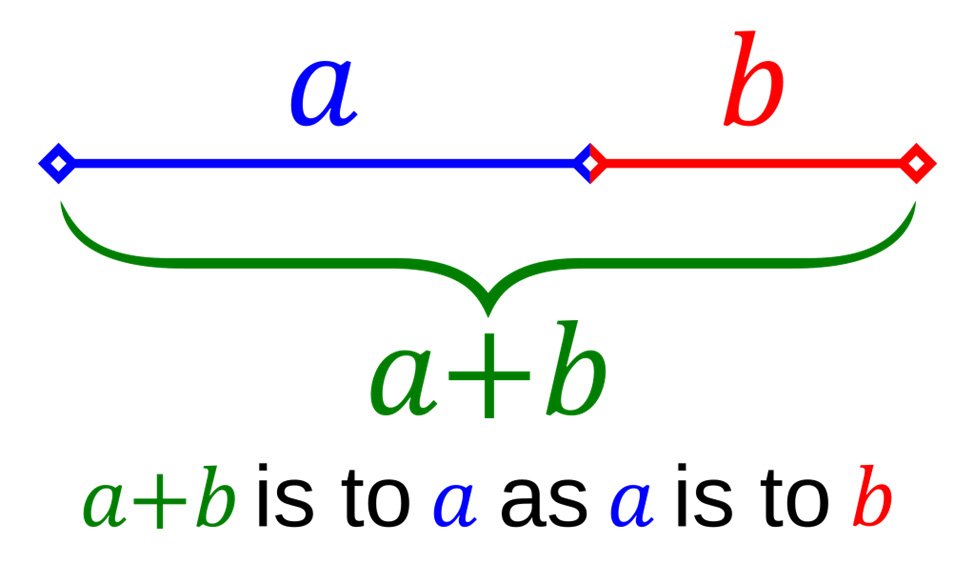
A standard. A secret code written into the blueprint of beauty. Ah, the Golden Ratio, φ. It’s been teasing intellects and stroking the egos of mathematicians since the days of Pythagoros, Plato, and Euclid in the 5th and 4th Centuries BCE. Picture it, togas, temples, and men with too much time and too few distractions, drawing perfect lines and getting far too excited about triangles. It was in that swirl of geometry that φ first winked its way into the spotlight. But it didn’t stop there, oh no. Like any irresistible force, it kept slipping into the margins of history, next seen entwining itself in Fibonacci’s famous sequence, a numerical dance that unfolds in curves and petals, pinecones and hurricanes. Nature, it seems, has always had a thing for symmetry… and secrets. And φ? It’s the code behind the curtain.

Platonic Solids
The Golden Ratio generates the Platonic Solids, the fundamental and elementary geometric forms that are the limit of constructability within visible physical space. In his Timaeus dialogue Plato hypothesized that the classical elements were made of these regular solids. A Platonic solid is a regular polyhedron where all the faces/sides are congruent (identical in shape and size) and all angles and edges are congruent. There are only five such polyhedra:
Tetrehedren, four faces of equilateral triangles.
Cube, six faces of squares.
Octahedren, eight faces of equilateral triangles.
Dodecathedron, twelve faces of pentagons.
Icosahedren, twenty faces of equilateral triangles.
Platonic solids occur naturally in crystals, chemical elements and molecules, life, biology, medicine, geology, acids, proteins, hydrocarbons, polymers, viruses, quantum mechanics, and more.
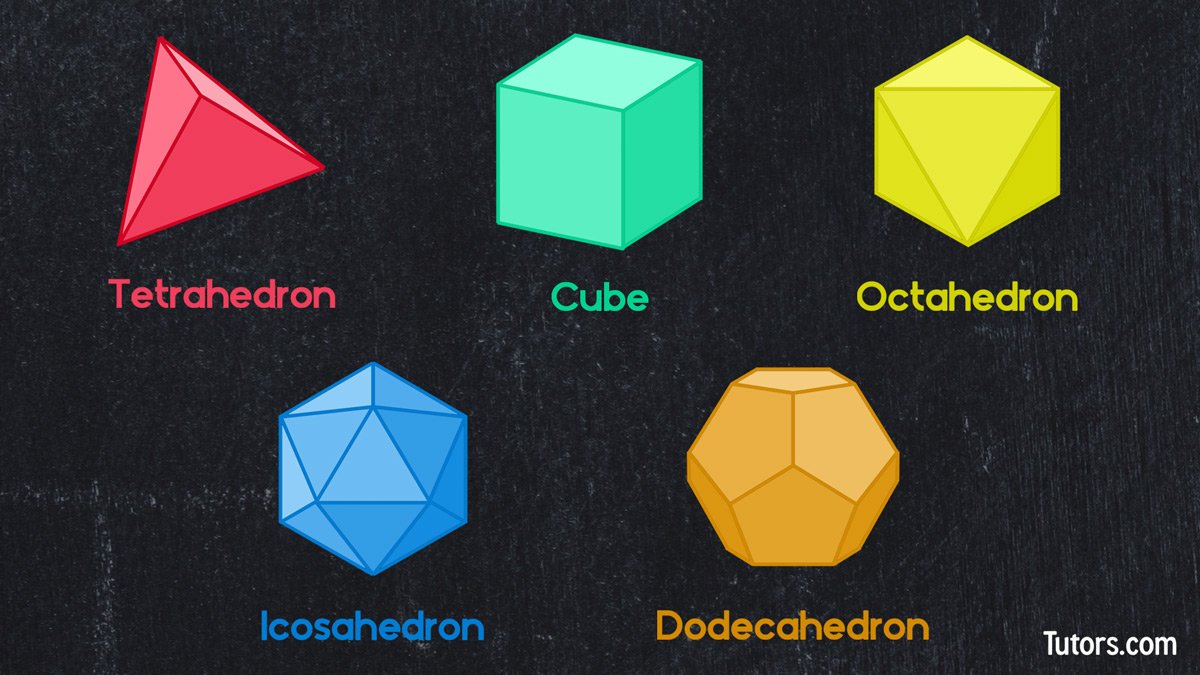
The Fibonacci Sequence
Leonardo Fibonacci (1170-1240) introduced Europe to the Fibonacci numbers and sequence which was first discovered in the 3rd Century BCE India. The Fibonacci Sequence is a simple progression, yet deceptively powerful, 1,2,3,5,8,13,21,34,55,89, and so on. Each number is the sum of the two before it, a little game of numerical nesting dolls. But here’s where it gets interesting… When you start dividing a number by the one just before it, and as you keep going. They’re circling φ like hungry wolves, spiraling tighter and tighter. Like, two forbidden lovers in a cosmic dance, destined to meet but never quite touch.
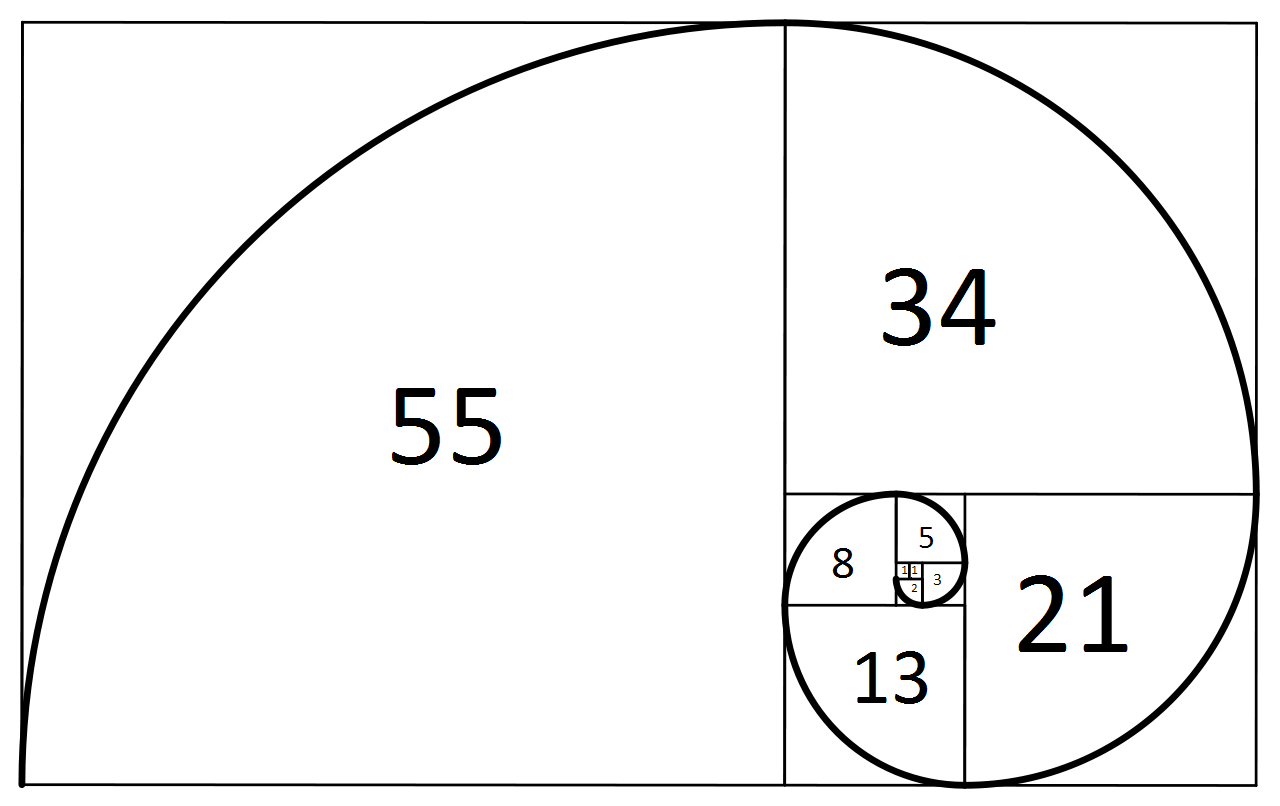
The Fibonacci sequence and spiral.
So next time you see a swirl in nature or a pattern that makes your chest flutter, know this, it’s the Fibonacci sequence and the Golden Ratio φ, dancing with you with the illusion of perfection.
Leonardo Da Vinci on the Golden Ratio Ordering Nature
Leonardo DaVinci (1452-1519) and mathematician Luca Pacioli (1447-1517) collaborated in writing the book Divine Proportion in 1498. The work is about the Golden Ratio, Platonic Solids, and the Fibonacci Sequence in the areas of art, prospective, architecture, and biological life processes. They show that the Golden Ratio and Fibonacci Sequence provide the ‘harmonic’ ordering of all living processes as to form, design, development, and motion.

Nautilus Shells – That hypnotic spiral? It’s not just pretty. It’s a perfect geometric striptease. As the shell grows, it follows a logarithmic spiral that traces φ’s tender kiss with each turn. A fossilized flirtation frozen in time.

Hurricanes – Violent. Chaotic. Powerful. But look closer, that spiral, that terrifying beauty? It’s phi again, swirling like the universe’s naughty fingerprint on a storm.

Sunflowers – Ever wonder why a sunflower feels too perfect to be real? That’s because its seeds follow Fibonacci spirals, tightly packed and efficient, 21 spirals clockwise, 34 counterclockwise, or 55 and 89 in larger blooms. Nature’s own golden algorithm for maximum efficiency… and maximum pleasure.

DNA the Blueprint of You– Even you are made from a divine design. The DNA double helix, that twisted ladder of life, has proportions that flirt with φ. Each turn of the helix spans 34 angstroms in length and 21 angstroms in width. That’s 34/21 ≈ 1.619 the ratio, embedded in your very essence. Even your chaos has a pattern, even your flaws follow form.

DNA double helix twists
Spider Web

Cauliflower

Kepler’s Musical Harmonic Ordered Universe
“Music is a moral law, it gives soul to the universe.” Plato
The great mathematician and astronomer Johannes Kepler (1571-1630) did breakthrough work on the Golden Ratio and Platonic Solids. His book The Harmony of the World, 1619, was on the ‘musical’ harmony and congruence in geometrical forms and physical phenomena in astronomy and astrophysics.
Kepler shows that the planetary orbital structure and orbital velocity of the solar system is mathematically congruent with the well-tempered musical scale with middle C set at 256 cycles. Kepler’s theory on the congruence of the Golden Ratio and the musical harmonic ordering of the physical universe was further verified by the great mathematician and astronomer Carl Gauss (1771-1855). Later it was also verified by quantum physicists Erwin Schrodinger (187-1961) and Louis de Broglie (1892-1987).

Even galaxies… yes, the actual damn universe is teasing you with Fibonacci foreplay.
Art, Architecture & Aesthetics
You think your obsession with the Mona Lisa is innocent? Think again. The Golden Ratio isn’t just hidden in nature’s curves, it’s engineered into the masterpieces of mankind. The architects, the artists, the mad geniuses of the Renaissance, they weren’t just painting and building with φ.
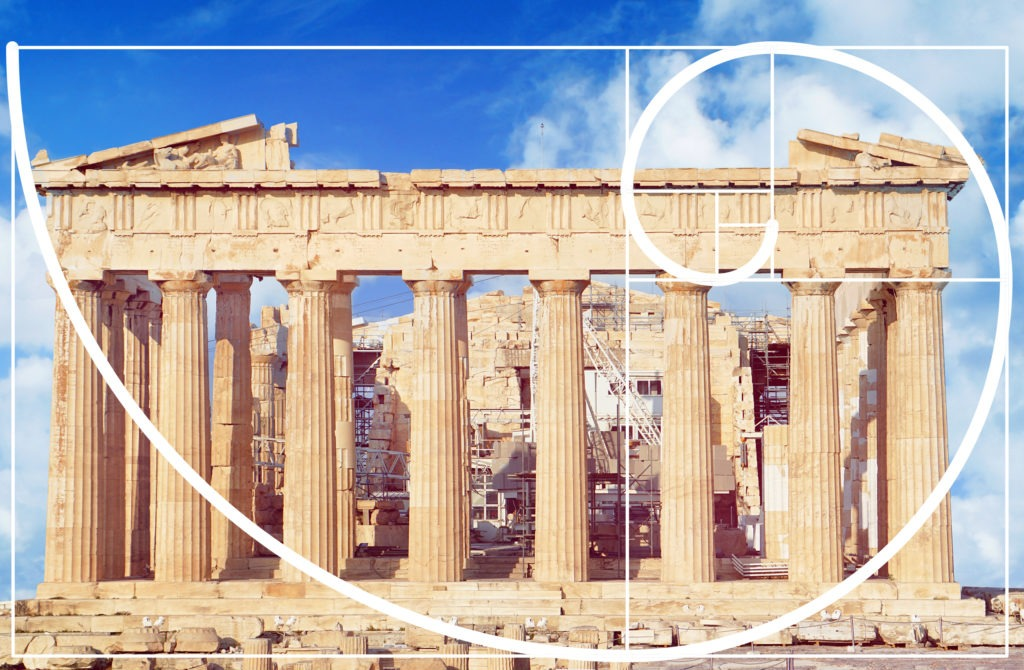
The Parthenon’s façade, it’s spacing of columns, its very aura, all steeped in the Golden Ratio. That chill you feel standing before it? That’s your primal instincts whispering: “This is order. This is sacred. Worship it.”
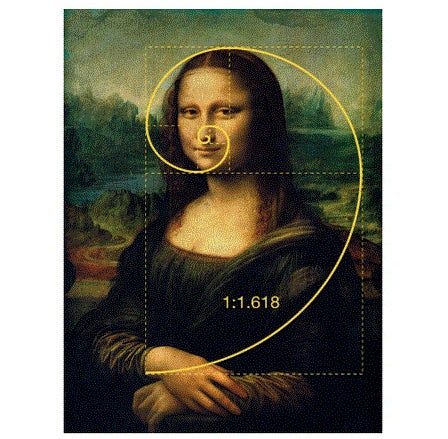
The Mona Lisa? She isn’t just smiling at you. She’s calculating your gaze, tugging at the geometry buried deep in your brain. Her face, her hands, the frame, every inch caresses the Golden Ratio. That feeling of calm, of magnetism, of being watched? That’s not mystique. That’s math. And don’t get me started on The Vitruvian Man, Leonardo’s ode to the human body as a divine equation. He wasn’t sketching a man. He was sketching perfection, sliced neatly into golden segments. Ancient Athens didn’t justthrow together a temple, they carved φ into stone.
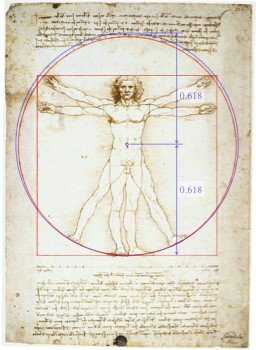
Leonardo Da Vinci
Michelangelo Masterpieces
Ever noticed how David’s body just feels right? Not too long, not too wide, just… divinely proportioned. It’s because the master chiseled him like a geometric sonnet, each ratio between body parts obeying φ like it was the law of flesh.
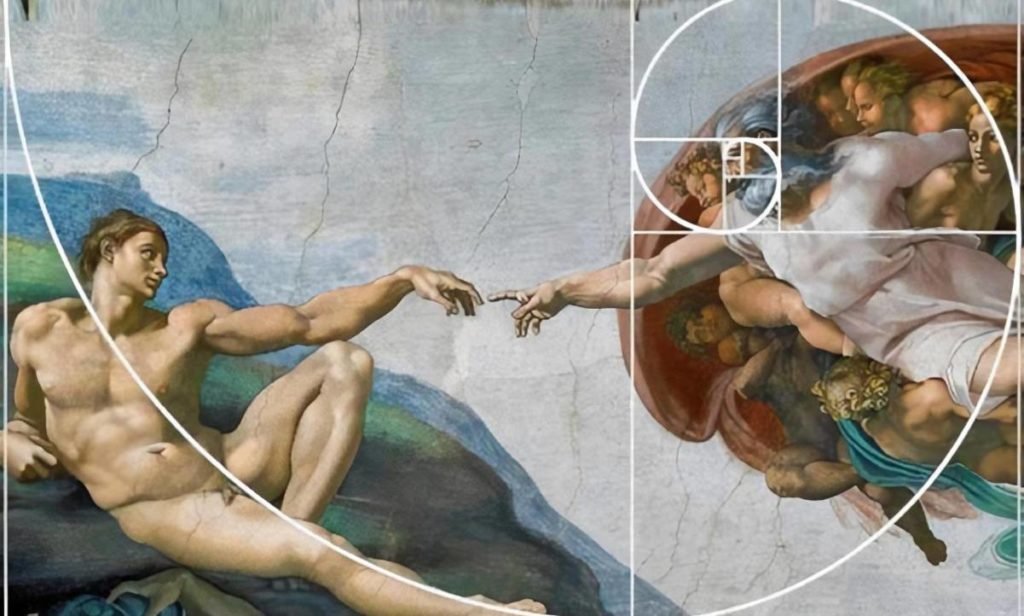
Even Today’s Designers Get It
Modern logos. Ad layouts. The golden spiral in photography composition. Social media grids. Designers and architects still bow to the ratio because φ isn’t just ancient.
It’s eternal, so when your breath catches at a sculpture, or your knees weaken in a cathedral, or a painting gives you that undeniable itch in your chest, don’t blame yourself. Blame Phi. Blame the ancients. Blame beauty engineered to make you feel something you can’t explain.
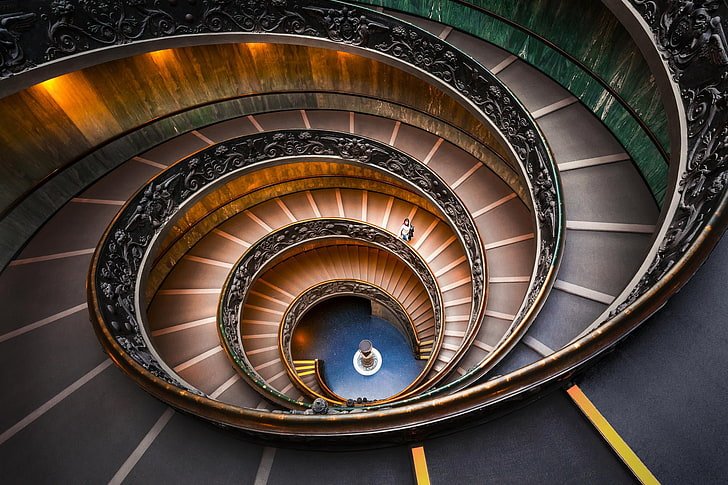
Modern Obsession & Design
They use Golden Ratio spacing and symmetry so precise, it turns desire into addiction. You don’t just like it, your brain wants it. Designed using a series of interlocking circles, each proportioned using Fibonacci sequence values. From Pepsi to National Geographic to your favorite skincare brand, φ is silently working in the background. Curves and cuts that feel just right. Fonts spaced to hypnotize. You think you chose the brand? It chose you, and it used φ to seal the deal.
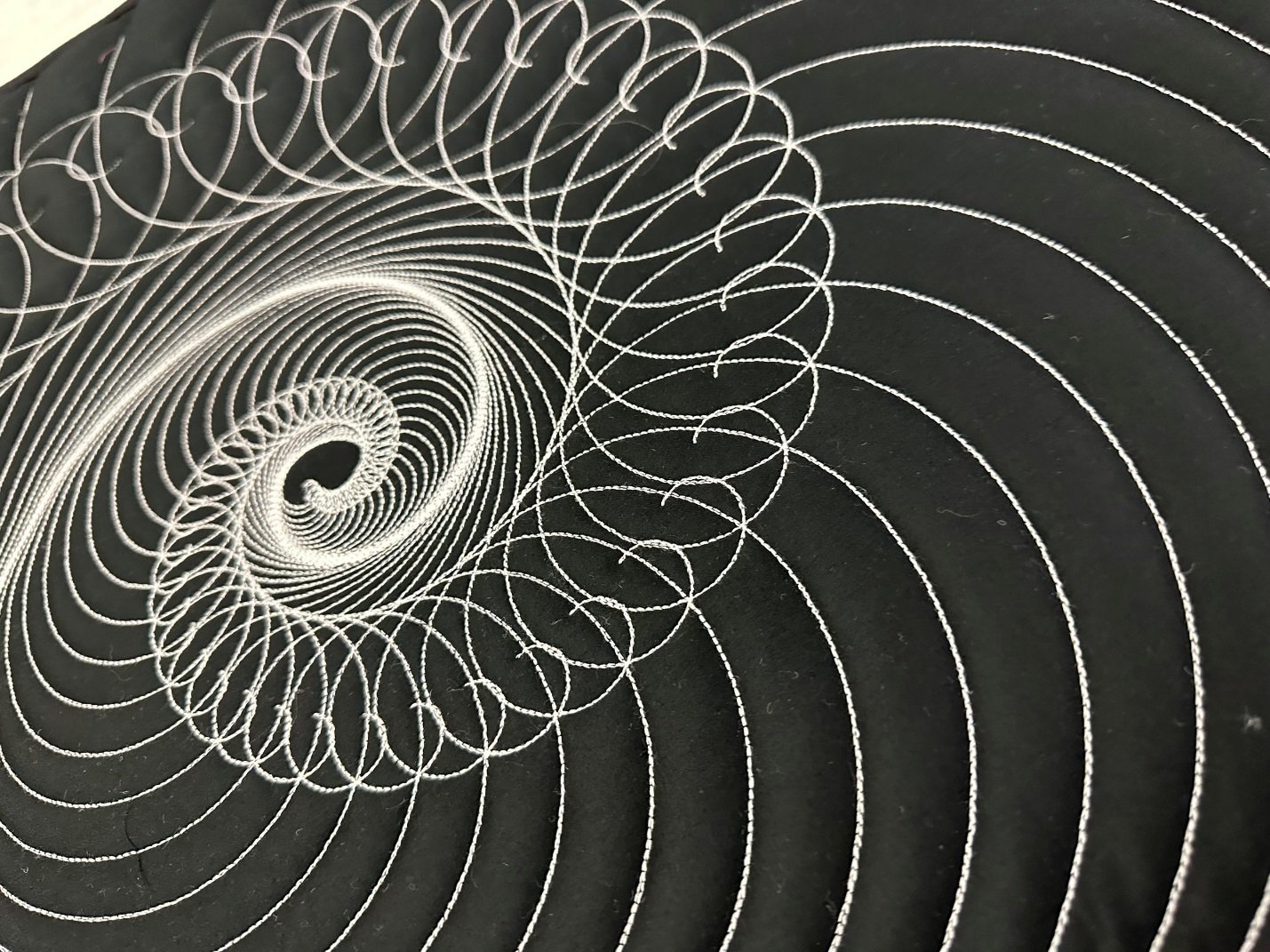
Because your brain craves order. In a world of chaos, clutter, and noise, φ is the clean cut of reason, the whisper of structure. The moment your eyes land on something balanced by the Golden Ratio, you feel it. Designers know this. They wield φ like a weapon, a silent little scalpel that cuts through the clutter and goes straight to your lizard brain. So, next time you see a brand too memorable, a layout too satisfying? It’s not luck. It’s design. It’s φ telling your instincts, “You want this.” So next time you catch your breath over a perfect smile, a flawless building, or a painting that feels like it’s looking straight through you, and remember, it’s not just beauty. It’s math wearing a silk dress, the Golden Ratio humming beneath the surface, turning chaos into seduction. You didn’t need to understand the numbers, you only had to feel them. And now? You do. Welcome to the secret language of beauty. You’ll never look at the world the same way again.
References
Divina Proportione, Leonardo Da Vinci and Luca Pacioli, 1498.
The Golden Ratio, Mario Livio, Broadway, New York, 2002.
Harmonice Mundi, Johannes Kepler, 1619.
Infinity and the Mind, Rudy Rucker, Birkhauser, Boston, 1982.
The Science of Music, Fidelio, NY, Winter 1991-92.
Timaeus, Plato, 360 BC.
What Is Mathematics, Richard Courant, Herbert Robbins, Oxford, 1941.
Wikipedia



